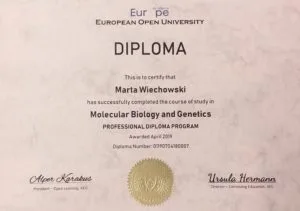
- Instructor: Elena Nemayeva
- Lectures: 16
- Students: 10906
- Duration: 10 weeks
Adobe Photoshop is a software application for image editing and photo retouching for use on Windows or MacOS computers. Photoshop offers users the ability to create, enhance, or otherwise edit images, artwork, and illustrations. Changing backgrounds, simulating a real-life painting, or creating an alternative view of the universe are all possible with Adobe Photoshop. It is the most widely used software tool for photo editing, image manipulation, and retouching for numerous image and video file formats. The tools within Photoshop make it possible to edit both individual images as well as large batches of photos. There are several versions of Photoshop, including Photoshop CC, Photoshop Elements, and Photoshop Lightroom. Adobe Photoshop is available on its own as a subscription that includes Photoshop Lightroom, and as part of the larger Creative Cloud subscription.
How is Photoshop Used?
Adobe Photoshop is a critical tool for designers, web developers, graphic artists, photographers, and creative professionals. It is widely used for image editing, retouching, creating image compositions, website mockups, and adding affects. Digital or scanned images can be edited for use online or in-print. Website layouts can be created within Photoshop; their designs can be finalized before developers move on to the coding stage. Stand-alone graphics can be created and exported for use within other programs.
What is Photoshop CC?
Adobe Photoshop CC is the Creative Cloud version of Photoshop, available by subscription. It is considered to be the professional-level version of the Photoshop family of products. Photoshop CC is available together with Photoshop Lightroom, or as part of a larger Creative Cloud subscription. Photoshop CC is an advanced imaging software used by designers, web professionals, video editors, and photographers to alter or manipulate digital images. Photoshop is primarily used to edit 2D images, although it does offer some 3D image editing functionality. Photoshop includes image analysis functionality, and can be used to prepare images for use online or in-print.
What is Photoshop Elements?
Adobe Photoshop Elements is the consumer-level version of the Photoshop family of products. Photoshop Elements contains many of the professional capabilities that are found in Adobe Photoshop CC, yet they are provided with more simplistic options designed with an entry-level user in mind. More specifically, it is designed for amateur photographers and digital photography hobbyists. Photoshop Elements is built using the same core digital imaging technology as Photoshop CC. Commonly used capabilities of Photoshop Elements include:
- Manipulating the color of an image.
- Cropping images.
- Repairing flaws, such as dust on the lens or red eyes.
- Drawing on an image with a pen or pencil.
- Adding text to images.
- Removing people or objects within an image.
- Organizing photos for quick access.
- Publishing images online or send via email.
What is Photoshop Lightroom?
Photoshop Lightroom is part of the Photoshop family of products and is primarily used by photographers for batch processing of large volumes of images. Lightroom does have the ability to create and save image presets that can be applied to a large batch of photos at one time. It also features non-destructive imaging tools; so that the original files remain intact. Lightroom has the ability to edit RAW files. The light balance and white exposure can be manipulated or adjusted within a RAW file. However, Photoshop Lightroom does not have many of the operating features or functions of Adobe Photoshop CC or Adobe Photoshop Elements, and uses a different interface.
Free Certification
Academy Europe presents high-quality formal diplomas, certificates and e-certificates which are formal proof and recognition of accredited online courses. It shows all student’s abilities to learn and achieve high results and is very useful to promote personal career including with CVs, job applications and self improvements.
How can you get your certificate at Academy Europe?
- You must click “complete” link at the end of every lesson of your course after you finish them.
- When you finish all lessons of course, the “finish course” link is going to be active at the end of last lesson.
- When you click the “finish course” link, you will finish your course on Academy Europe officially. Then, “certificate” page of you completed course will be automatically active.
- You can see and download your certificate online after you click on your “certificate” link.
Samples: Horizantal Diploma – Horizantal Certificate – Vertical E-Certificate



Prerequisites
The basic knowledge of Graphical User Interface, Object Oriented Programming and software tools and menus are the only prerequisite for this tutorial.
Before you start proceeding with this course on Academy Europe, we are assuming that you have a good aptitude and can think logically. You should want to try something different.
Ideal candidates for the course would typically possess:
– Discipline and attentiveness
– Ability to conduct research
– Ability to perform tasks with speed, efficiency, and accuracy
– Analytical judgment
– Patience to interpret technical/scientific data
– A willingness to learn, roll up your sleeves and work toward your dream!
– A computer, tablet or smartphone and an internet connection
– Basic computer skills
Audience
This tutorial has been intended for the users willing to take the human computer interactions as a next level of study in their career.
This course by Academy Europe aims at imparting quality education and training to students.
Academy Europe is dedicated to its students, their specific learning requirements, and their overall learning success.
This course is directed toward a student-centered, independent study, asynchronous learning approach.
After completing this course on Academy Europe, students will get self improvement and promotion in their careers.
This course is based on at least two learning skills which are provided to the users through audio & visuals, videos, verbal presentations and articles, all of which are asynchronized with distance education approach.
Curriculum
- 16 Sections
- 16 Lessons
- 10 Weeks
- Photoshop Introduction1
- Creating New File In Photoshop1
- Photoshop Tools Bar1
- Photoshop Move Tool1
- Photoshop Selection Tools1
- Photoshop Marquee Tools1
- Photoshop Lasso Tools1
- Photoshop Quick Selection Tools1
- Photoshop Crop Tools1
- Photo Slice Tools1
- Photoshop Eyedropper, Color Sampler, Ruler And Note Tool1
- Photoshop Image Healing Tools1
- Photoshop Brush Tool1
- Photoshop Clone And Pattern Stamp Tools With History Brush1
- Photoshop Eraser Tool1
- Completion of Course1





